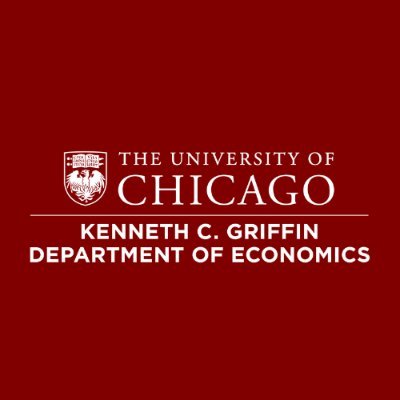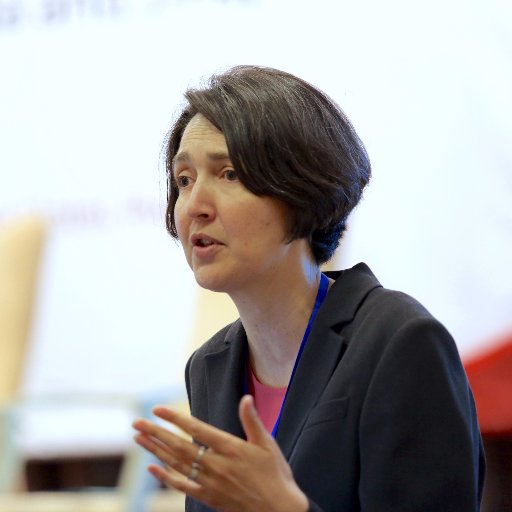
Ed Jee
@ed_jee
Followers
546
Following
1K
Media
12
Statuses
106
Econ grad student and human being.
Chicago, IL
Joined June 2015
My @OurWorldInData article this week looks at why, after two centuries of progress against the very worst poverty, the world is now facing a future in which progress comes to a halt. The end of progress against extreme poverty? https://t.co/HJ8tppFS7d
ourworldindata.org
In the last three decades, the world has made progress against extreme poverty faster than ever before. But unless the poorest economies start growing, this period of progress against the worst form...
7
34
79
Ed's job market paper is a tour de force: 27 RCTs harmonized, fundamental identification challenges solved, and the clearest empirical evidence we have on poverty traps. Brilliant work from one of the most thoughtful, ambitious, and technically gifted young economists!
Do poverty traps exist? @ed_jee's study of 27 RCTs finds they're real but rare. Though fixed costs make traps common, forward-looking behavior & productivity differences mean they only affect 25% of households. Read more: https://t.co/dIx7XdnJoO
#UChicago #EconJobMarket
0
21
112
Conroy's JMP studies how to aggregate treatment effects across multiple outcomes. He evaluates several existing methods and proposes a new method for optimal aggregation that ensures weights with good properties. Read more: https://t.co/1FHCg8x7o9
#UChicago #EconJobMarket
0
3
11
Balboni et al found poverty trap in Bangladesh due to fixed costs (eg to buy a cow) but is that unusual? Why cant ppl save up to buy the fixed asset? @ed_jee finds fixed costs of high return assets (diff by country) frequently cause traps but many ppl do save to overcome them.
Do poverty traps exist? @ed_jee's study of 27 RCTs finds they're real but rare. Though fixed costs make traps common, forward-looking behavior & productivity differences mean they only affect 25% of households. Read more: https://t.co/dIx7XdnJoO
#UChicago #EconJobMarket
0
8
22
Do poverty traps exist? @ed_jee's study of 27 RCTs finds they're real but rare. Though fixed costs make traps common, forward-looking behavior & productivity differences mean they only affect 25% of households. Read more: https://t.co/dIx7XdnJoO
#UChicago #EconJobMarket
3
24
90
Pharmacy exits cause temp. declines in medication use but long-run increases. Closure-induced reallocations to higher-dispensing pharmacies combined with meaningful impacts of pharmacies drive the increases. Read more about @econbattles: https://t.co/G2OmN6XGrT
#EconJobMarket
0
6
27
@CunaMichae77590’s JMP studies the hidden curriculum—unwritten rules for success. Combining data and field experiments, he finds first-gen students engage less in key actions, e.g. networking, due to low awareness. Read more: https://t.co/vi1XlIj8S3
#UChicago #EconJobMarket
1
36
182
Elena Aguilar’s (@tag_elena) job market paper studies location choices as a human capital investment. High-opportunity cities like New York offer superior learning environments but require paying high upfront housing costs. https://t.co/ysMrlbFpkL
1
18
61
@haruka__uchida studies labor & education. Her JMP runs 2 field experiments to measure & disentangle forms of discrimination. She finds that hiding applicant names changes representation without reducing quality. Read more: https://t.co/DzSnXBT0FZ
#UChicago #EconJobMarket
1
16
68
When should governments target industries in specific places? @ARBhandari97 shows that optimal industrial policy is place-based when productivity is Hicks-neutral, but uniform when it is Harrod-neutral. Read more: https://t.co/J6itbei88s
#UChicago #EconJobMarket
0
30
77
@camillaschneier Jeanne Sorin (@jenn_slg) studies transportation and environmental challenges in developing cities. In her JMP, she examines how land acquisition costs prevent the implementation of high benefit road improvement projects in Kampala, Uganda. Read more at https://t.co/AM2X8OX5fu
3
28
79
@alexpetnet @tanyarajan .@jordanr_k studies spatial & trade economics. His JMP shows how barriers to urban expansion and high commuting costs inhibit development. Reducing urban costs would boost welfare by 66% in low-income nations and help nations adapt to climate change. https://t.co/e3WLDyTLWj
2
20
80
@alexpetnet How do workers sort between formal and informal sector jobs within the same industry? @tanyarajan’s JMP collects data from Bangladeshi garment workers and quantifies the role of (1) search frictions and (2) preferences for nonwage amenities. Read more at: https://t.co/kZLAMGhNXB
1
7
36
.@alexpetnet combines spatial GE modeling and computational methods to study economic effects of borders. His JMP develops tools to analyze both existing and optimal border configurations, evaluating welfare costs of post-colonial borders in Africa. https://t.co/Jj8tdOEFiX
1
10
36
Labor markets in LMICs have high turnover & unemployment, even with high demand. Through 3 field experiments, Varun K examines how limited commitment + liquidity constraints on both sides of the market cause mismatch in labor supply-demand, which partly explains this phenomenon.
1
8
31
@SamuelHigbee How do social divisions shape the benefits of agglomeration? @ShanonHMHsu's job market paper studies a 1950s ethnic-based resettlement in British Malaya, finding that while the clustering of Chinese created agglomeration economies, ethnic divisions limited gains for other groups.
1
1
17
How can we optimize experiments to inform policy decisions? @SamuelHigbee develops a two-wave adaptive experimental design which tailors the experiment to the objectives and constraints of policymakers. Read: https://t.co/TNyYfgTQPz.
2
1
12
Thomas Bourany @TBourany works at the intersection of Macroeconomics, Environmental Economics, and International Trade. In his JMP, he shows how to design optimal climate agreements to implement carbon policy in the presence of free-riding and inequality. https://t.co/e77SvC7AiZ
1
14
56
@SamuelHigbee @ShanonHMHsu @joshuadhigbee Thomas Hierons (@tom_hierons) works in urban and spatial economics, international trade, and econometrics. In his job market paper, he studies the welfare gains from optimal congestion pricing with an application to New York City. Learn more at https://t.co/H5MxeBfTWx.
1
11
42
Social image is an important tool, sometimes interact with individual monetary incentives to change optimal policy @AnneKaring @ed_jee
Next: @AnneKaring presents a field experiment in Kenya showing that social image concerns influence deworming decisions. Take-up drops with distance but increases when adults signal their status, leading to suboptimal treatment placement. Discussion to follow with @BelotMichele.
0
2
13








